Honda Releases 2017 CRF450RX and CRF450R Information.
2017 CRF450R at a glance:
-All-new engine with more compact design producing a claimed 60+ HP at the crank.
-New twin-spar aluminum chassis that allows for a unique straight intake tract.
-Return to spring forks that are 49mm Showa A Kit spec.
-Tighter mass centralization. More rear weighted chassis.
-Electric starting available as an option with a $650 estimated price tag.
2017 CRF450RX at a glance:
-18-inch rear wheel, side-stand, 2.2-gallon over sized tank, enduro suspension settings, off-road racing optimized ECU setting and electric starting standard.
-Engine spec is identical to the motocross bike in every way except ECU setting.
-Suspension components identical except for internal settings.
-Closed course full-on race bike.
This is the first public reveal of information on the 2017 CRF450R, the bonus you ask? Now there are two: a CRF450R motocross bike and an all-new CRF450RX close-course off-road racer. Via oodles of rumors, spy photos and works bikes over the past years all signaled this bike was real and on its way, Dirt Bike Test has all the facts in place, we even got to touch one-jealous?
Honda made little effort to reveal that it was well aware current CRF450R was not everything it was expected to be, going all the way back to the radical changes in 2009. In fact the last time the larger CRF received universal high praise and winning professional racing results was way back in 2008. No surprise then that the undertone of Big Red was it really looked heavily at the machine of yesteryear for inspiration when developing the 2017 line.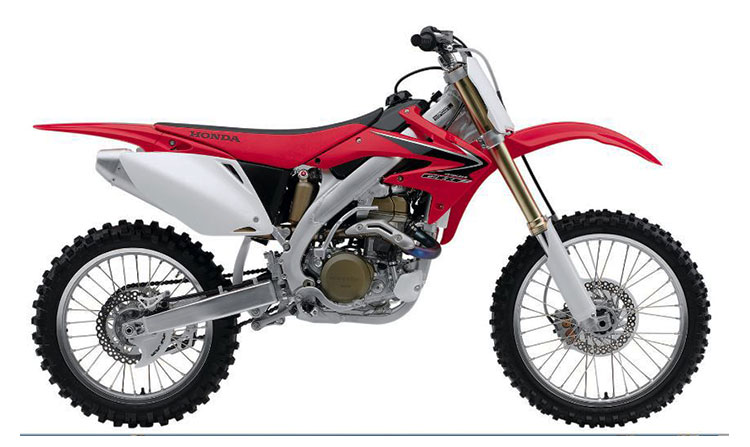
The 08 was considered a powerhouse in the class with a handling trait that was very middle-of-the-road. It had excellent suspension for the time and like almost every Honda before and after it, was a very seamless as an entire package. Yet it had some additional character largely in the power arena, something that has been lost since fuel injection came around in 2009. But trust us those memories have grown fonder with time and bikes have become much better and more powerful, don’t ride a 2008 CRF450R or your recollections will be spoiled. We have and we are warning you.
The new CRF’s were designed from the wheels up in hopes to bring back that glory of yesteryear. It started with the quest for more power and every aspect of the bike shows that. The core being the straight downdraft intake tract and exhaust routing. As engineers have learned more and more about getting not just additional horsepower and torque but excellent drivability, the intake tract becomes critical. And on a tightly packed dirt bike this gets very tricky and required some drastic changes in the chassis. Yamaha resorted to spinning the intake to the front of the motor like an obscure company like Cannondale before them.
In addition to the intake track, the head has also been heavily revised. Yes it is still the Uni-Cam design but very much re-configured. They increased the lift on the valves and have now installed a rocker arm (finger follower) between the cam and the intake cam. The rocker is also DLC coated and allows an increase in lift of .05mm. Exhaust lift has been increased .85mm. Part of the increased lift also has to do with the new oval-coil cross-section valve springs. The valves themselves are more upright to help further enhance flow into the head. Both the intake and exhaust valves are 1 degree more upright, from 10 to 9 degrees on the exhaust and 11.5 to 10.5 on the intake. Under the valves the piston compression has been raised to 13.5 with a new piston dome shape and the upper rod piston pin comes standard with a DLC coating. With the increased HP, Honda has also upped the piston oil spray bar from two jets to four for additional cooling on the underside of the piston.
Many ask why Honda can’t make the same power as a lot of the other bikes in standard trim. The main reason is that they self police to a lower sound level than most manufacturers with mufflers that are more restrictive and in some cases a corked up airbox on the intake side. In fact the world spec CRF often does not have the slots in the side panels opened up as well as having longer mufflers. Again this bike is respectfully quiet and uses the dual mufflers to accomplish the lower sound levels with a minimal impact on power.
In the crankcase, pumping loss is such a power robber in any four-stroke and that was addressed by running a dual stake scavenging pump. This draws the oil from the bottom of the crankcase faster for less pumping loss and it also allows the engine to reduce total oil volume from 1490cc to 1250cc. The engine now has a single oil system for both the engine and the transmission.
There is still the three-position ignition map switch, now migrated into a single part with the kill button on the left side of the bars. That was said to leave room for the electric starting button on the right side. Handlebars are still the smaller 7/8-inch Renthal that has been standard for a long time.
Small and compact is the key and Honda also reduced the width of the clutch from 8 to 7 plates and increased the thickness of the steel plates. There is no indication that there will be a hydraulic clutch any time in the future on these cases. The clutch appears to sit slightly higher in the cases and the clutch no longer rides in a bath of oil but oil is pumped into the clutch. This and an improved oil pumping system reduce oil drag on spinning parts. With the added power the transmission has been beefed up and the final gear rations have been optimized for traction and the new power delivery.
So once the intake was refined the new chassis had to allow for a lower shock position and a redesigned shock. The 1.6-gallon gas tank, now made from titanium, still rides in the same position but the airbox and filter element had to be raised up in the area under the seat. The shock is still basically the same length with a slight reduction in stroke (5mm) and the whole setup positioned lower in the rear of the frame. The linkage is also lower and has been revised to work with a shorter swingarm. The frame grew as well using the front rake and overall trail to accomplish the same basic wheelbase and shift some weight rearward. All of the bodywork has a new look with less edges to get caught, streamline the look and thin out the chassis as much as possible. The weight is said to be the same as the current model with some parts losing weight but others increasing a bit.
On paper and from what we have heard from some of the test riders that have ridden the bike the 2017, Honda looks to be on the right track with regard to performance. Being underpowered has been one of the biggest complaints on the CRF450R since 2009. They never made bad power it was they just never made enough compared to competition by en large. Peak horsepower is not always a determining factor but it is the number so many people look to judge an engine. The claim is 60hp at the crank on the 17 CRF450R, which if true, should put Honda right there in the ballpark. This bike has been in the works for many years and we even spotted Works bikes years back testing all sorts of more direct intake tracks. One version had intake tracks that went on either side of the shock tower. We know that the more direct the intake track, the better and easier to build power. But this bike is late stemming from production problems caused by an earthquake in Japan where the bike will be produced. We will not be able to answer all of your questions until we get a chance to ride the bike ourselves, likely mid-October.
Test riders we spoke to claimed the 2017 is a huge improvement compared to the older version and it makes it hard to go back. In fact some of the test riders used on the 2006-2008 CRF development were called back into duty to help retain some of the feel and character of that bike. They claimed the new bike gets much better traction and has a much more stable feel while still keeping the lighter weight feel of the current CRF. And the choice to go back to a spring fork was an easy one they said. As soon as they tested the 49mm Showa A-Kit spec fork there was no going back.
Further prying about the switch back to the spring fork revealed that it was a complex decision. It is a higher cost part and it weighs more, two things that are not good for the sales floor or the brochure. Additionally the biggest advantage from a market research standpoint was that it is simple, meaning there is one less thing for the customer to have to worry about checking. And there is the perception that the performance of the spring fork is always better than an air fork but that is a little harder to determine.
That cost of the fork and likely the titanium fuel tank may have cost the HPSD (Honda Progressive Steering Damper) its home underneath the front numberplate. It is absent in 2017 yet the mounts remain if a rider were wanting to add one off an earlier model.
The CRF450RX is a departure from Honda thinking and we feel in a good way. The company has realized there is a market for the closed-course off-road racing market, something that KTM, Yamaha and Husky have proven. The concept is simple. Add just the stuff to your motocrosser that it needs to go off-road racing and nothing that it doesn’t. And Honda seems to have hit the nail on the head. We predicted the introduction of the bike some time ago so it wasn’t as much of a surprise as it will be to some.
The RX (you can’t just call it an X as the long standing CRF450X is still in the lineup and likely unchanged) has the right stuff to make it a player. Knowing the guys who were in on development and testing, they know how to set up a bike so we suspect the thing will be potent right from the get-go. It is a little different from the Yamaha definition and closer to a KTM by way of a close ratio gear box instead of having a semi-wide ratio five-speed or even a six-speed like the factory rally bike is claimed to have. It was designed for GNCC or GP racing as a target, not so much for desert or Baja style events.
One of the small changes between the R and RX is different engine hanger brackets off the frame to tune the rigidity and flex character of the chassis. A small change that goes a long way in how a bike feels and reacts to bumps on the ground. Both of the bikes have plastic skid plate and front and rear disc protection standard.
With the electric starting and the additional weight from the heavier parts and fuel the weight is said to be 16-pounds higher than the motocrosser. And that is with a standard lead-acid battery too. Production of the RX is also a little ways behind and we will let you know when it is expected as soon as we find out. Prices on either bike are still pending.
What about the CRF250R or a possible CRF250RX? Well those would appear to be at least a year away. And no two or three stroke bike yet either, so you can keep dreaming.
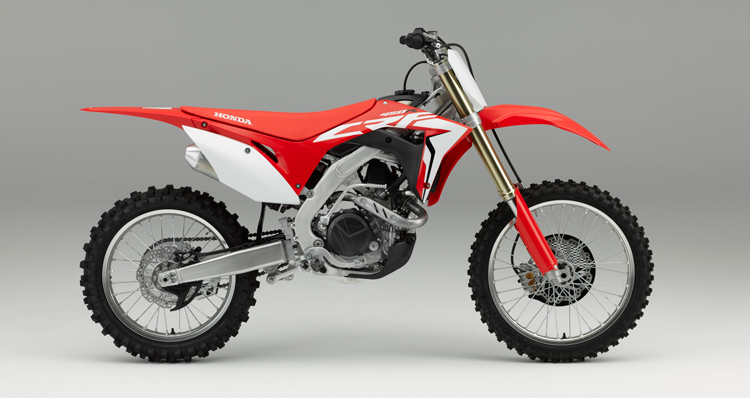

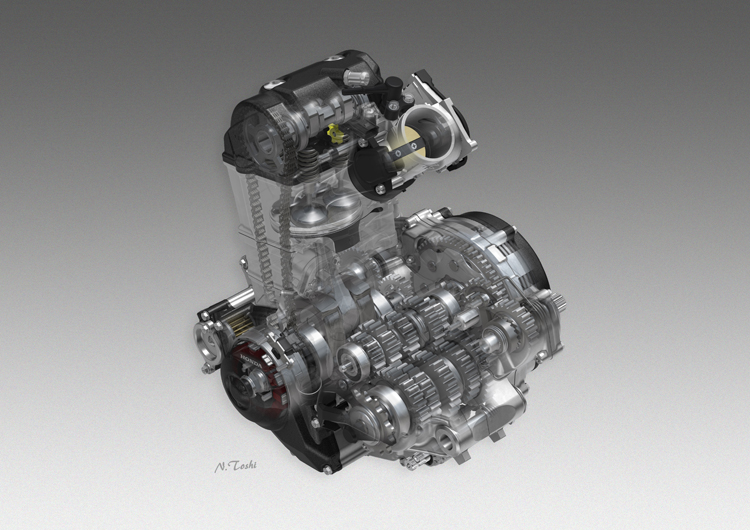
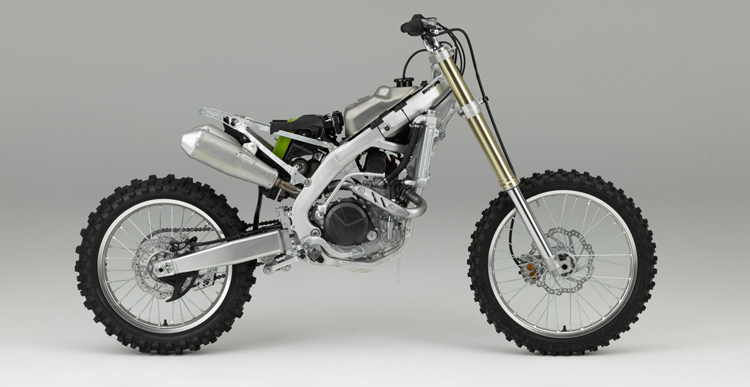
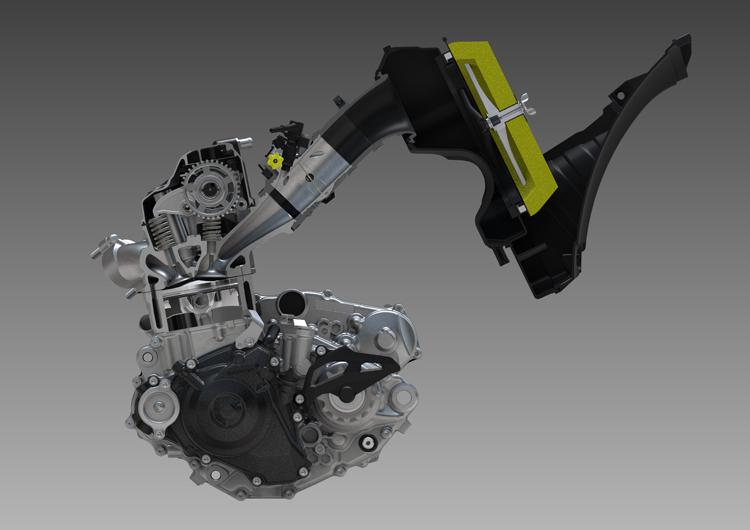

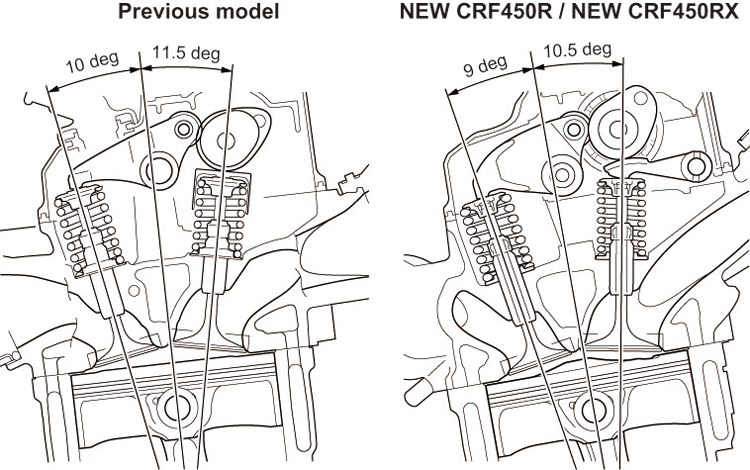
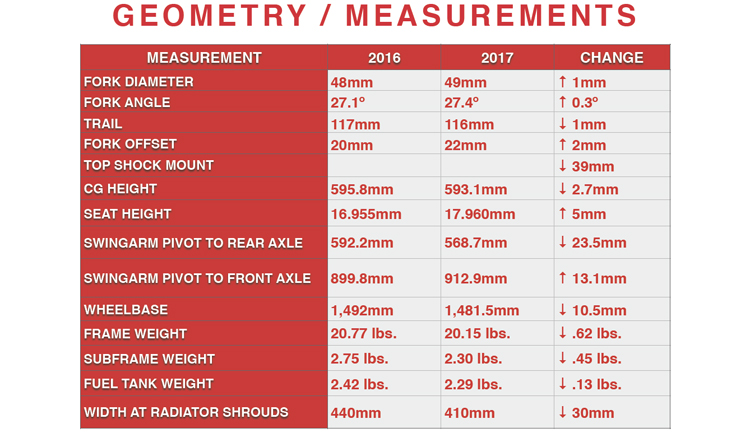
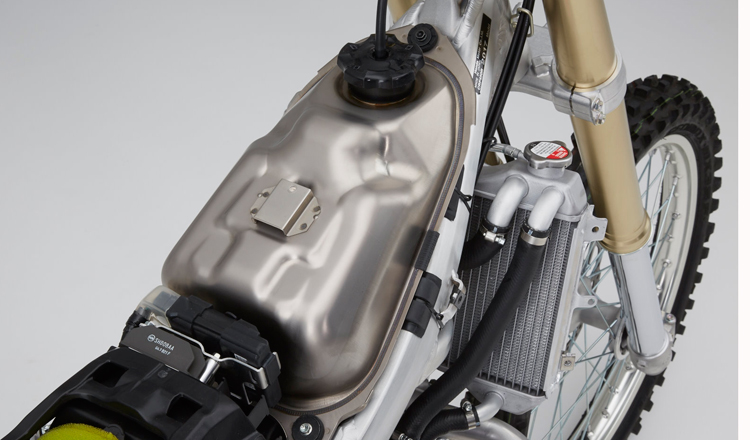
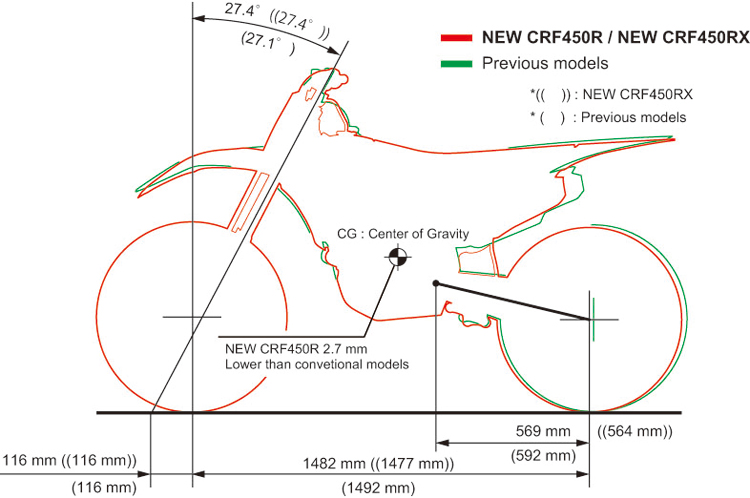

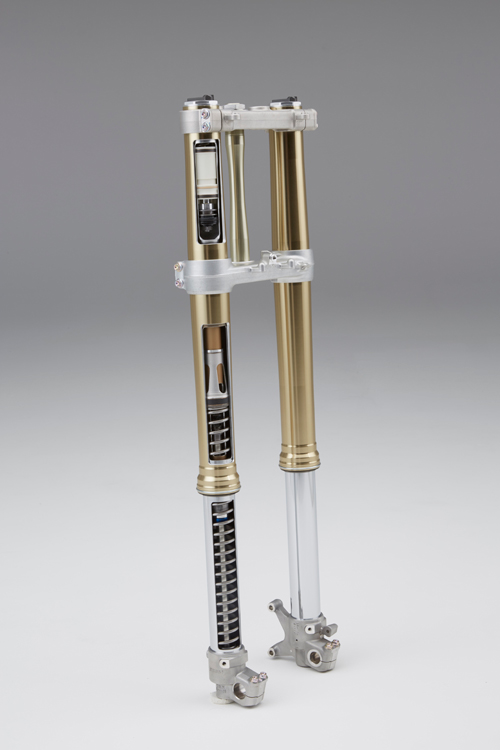

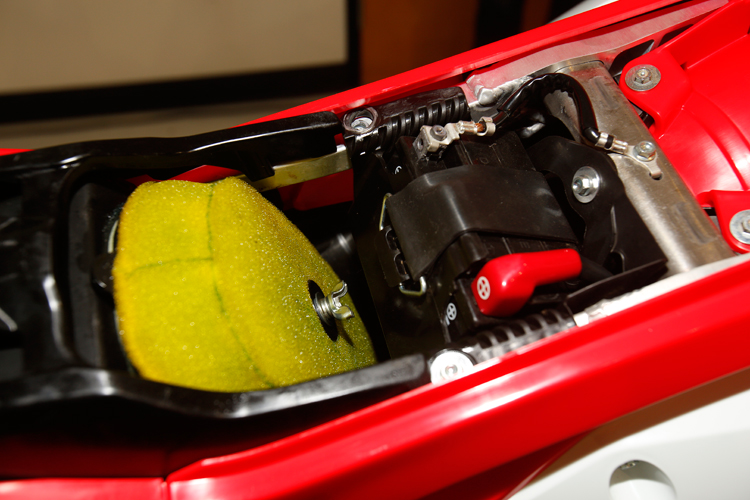

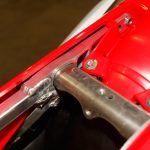
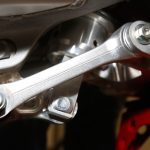

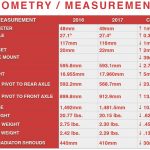

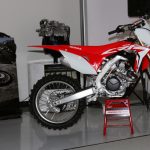

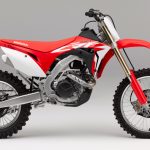
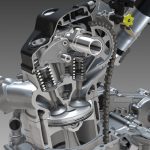

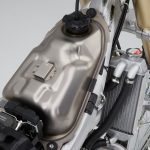
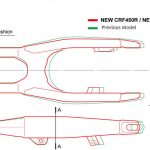
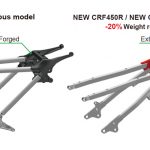
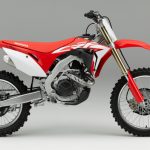
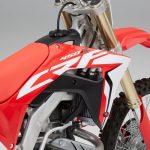
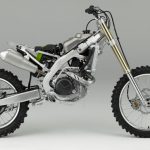
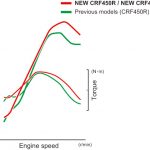
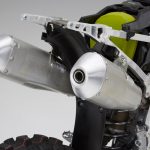
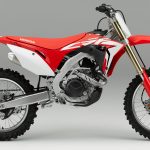
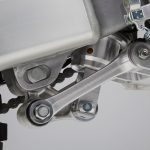

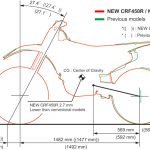
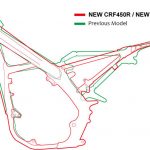
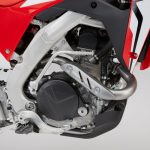
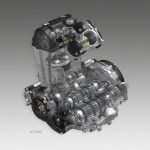
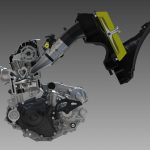
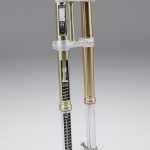
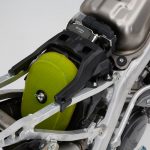
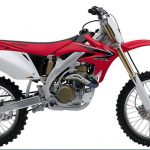


9 Responses to “First Look: 2017 Honda CRF450RX and CRF450R”
steve_kamrad
Thorough. Nice work.
GW247
Great read, not a 2 stroke, but big changes are always positive! Let’s see what the companies bring to the table.
Sam Miller
Horray another useless dyno graph with no numbers.
Jimmy Lewis
It is better that way because the numbers are relative to just that dyno. The Dirt Bike Test Dyno not only shows more horsepower than any other, it now goes to 11!
Lizzy Johnston
looks like it still doesnt make power right to the end of the rev range
David Giese
The shroud plastic’s make the bike look disjointed in my opinion.
Ross Martin
Jimmy,
The intake design honors the time tested design I saw on Dan Gurney’s Indy and F1 engines and later on his alligator motorcycles. If you can see the value when your looking down the intake – you’re doing something right:) He is 40 years ahead of his time. The below article says it all. http://www.adandp.media/articles/dan-gurney-creates-a-new-engine
The intakes look surprisingly similar.
Matthew Cronin
So essentially one new bike. Weeeee!
As a off roader I think I will be looking to align with a company that values its off road line customers as much as motocross. Husqvarna is that company as is KTM.
I have a 12 250 X that though reliable hasn’t changed one bit from my friends 06 250X other than the color of the rear fender and a improved piston cooling jet. I am dialed in on my bike but when equipped for proper enduro…bark busters, heavy duty tubes or inserts, skid plate it is a overweight pig.
Honda talks all zen master about corporate philosophy but year in and year out they remain three or four years developmentally behind the segment leaders. The bike that Mookie won a 250 championship on is widely known to be a far cry from what they peddle to you and I.
I am stunned beyond belief that with all the other builders investing so heavily in the off road market that Honda did NOTHING…since 2004. In the article above they market the RX as the same as the R “spec wise” and they give you the option to purchase E start for the R at a $700 dollar/8 pound penalty which is…..great news???? How about the message you send when your new direction in the off road market is to take your track bike, throw a 18 on the back and brag that this is the new “tip of the spear” in our off road segment…all while peddling the unchanged X machines. So is the X line the new “mom and pop” entry level machine?
How stupid to basically state that we have been so stagnant and disinterested in the off road segment for the last 13 years that we took a track bike, tossed a 18 on the back and it is now better in every way that what we have been peddling you for far too long unchanged.
Too conservative and certainly full of S**T when they say they have been talking to the customer about what they want.
smrscott
I see your point but realize that the best bikes for several manufactures is a closed-course off-road race bike. Both KTM and Husqvarna market off-road bikes that are basically converted motocross bikes. The 2017 Husky FX is just that as is the KTM XC. If you want a KTM 350 or 450 enduro off-road bike in 2017 you have to buy the street legal EXC-F model. Honda is adding a bike that the public seems to want and they are keeping the standard X for those non-race trial riders.